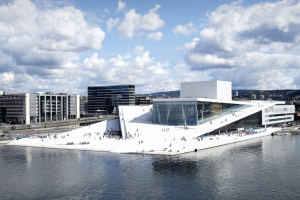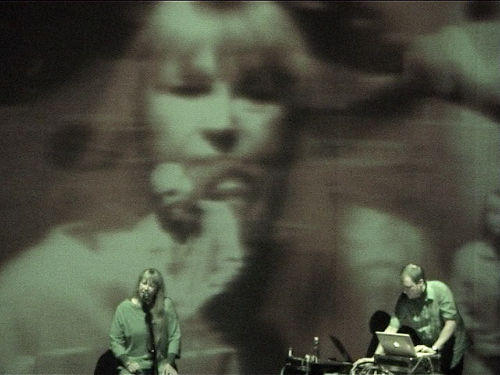For my performance and installation at Stereolux in Nantes I answered a few questions about my work from Laurent Diouf, chief editor of MCD. The short version will be at stereolux website, but here is the long version:
01_ First, a few sentences about Radiant… about the meaning of this installation… and also about the use of laser and phosphorescent paint…
My work with Radiant started out with some thoughts on extinction, growth and decay, the fascination with how plants create food from light and the material qualities of laser and the phosphorescent pigment. Laser light is more intense than sunlight, and phosporecent pigment are actual natural minerals that are able to capture light and slowly release it as a green glow (In the times of Galileo they were called solar sponges).
Radiant is also much about time and speed: The intense quick drawings of the laser point versus the slowly fading out when the light is released. The interesting things happen in the layering of these drawings, where you can see traces of multiple pasts mixed with fresh drawings: different time scales (or Bergson´s duration) coexist on the surface of the screen.
For the audience I think it works also in a different sense when thinking about scale. It contains both a macro and a micro scale: You could be staring into the universe or be looking at a cell or subatomic processes.
02_ Your works / installations are “conversations with spaces” (with light, projection, sound and motion)… is it the same way for/with Radiant ?
Normally my process is to start with the space where I will make a work, spend time exploring it, using improvisation as a method: I bring my set of tools and start experimenting my way towards a path that creates an interesting amplification or transformation of the space.
With Radiant it is a bit different since I started it out as making a big flat quadratic light painting (the one at Stereolux will be 3.6×3.6m), and not particularly thinking about the space it would be presented in.
However the installation is transformed by the spaces it is presented in, and it also has the power to transform and intensify the spaces it is presented in. It is a quite different setting from a rough concrete environment at Kraftwerk during Berlin Atonal to a circular floor projection with a custom made arced wall in at Kunsthall Grenland in Norway.
Also the light of the white laser beam is quite intense so the resulting shadows in the space is quite similar to my other light installations.
03_ Following the opening of the exhibition, you’ll do a performance. What about this live a/v ? Will you use some elements from the installation in/for your set ?
Radiant started out as an installation, and I always thought of it as a loop piece because of the constant layering of time creating new images, where the installation becomes a place or a state you walk into. As a live performance time is not circular, it has a direction so this changes quite a lot the experience of the piece I think. Also a live set is more of a communal experience while the installation is maybe better experienced alone or with a few people.
The raw material of the installation and the live set is more or less the same, it is the structuring that is the main difference.
Also, the live set introduced the soundtrack, which is created in real time using the amplified mechanical sounds produced by the laser mirrors. The sound from the laser is amplified and played through the speakers, but also recorded and reappearing as new sound layers (similar to the visual material) during the performance.
My exhibition at Stereolux will actually be the first time I will try use this sound setup for the installation as well.
04_ Generally speaking, how do you manage your live’ set ? What do you want to show, to give to the audience through a live A/V. ? Is it also a “space for co-working” with other artists ?
I guess I partly answered that in the previous question, but for me this performance is about creating a focused intensified experience for the audience, in contrast to the installation which is more of a meditative piece.
Almost all of my other live A/V performances are quite different from this one, as they are real time free improvisations with musicians or other visual artists, where the process unfolding through the collaboration is the interesting part.
So Radiant Live is a very controlled piece in that sense, with a quite fixed structure but with room for variations.
05_ If you have some others projects…
I recently created a site specific light installation for four interconnected rooms in a gallery space. The piece was called Red White Black and consisted of two rails of LED strip that followed the contours of the rooms and doorways. One pulse of white light moved in one direction, one pulse of red light moved in the other. Super simple in one way, but it created a very dynamic space of opening and closing, revealing and hiding, a space that expands, collapses, twists and turns in the light from the red and the white pulse of light that chases along the walls, corners and door openings of the space. Probably one of my favourite pieces 🙂
A very different work but which has been my most shown work the last years is Barents (mare incognitum). It is a single channel video installation of the Barents Sea slowly turning around. It was filmed at the border of Norway and Russia with my custom built camera pointing towards the North Pole. It is one of many works that came out of my involvement with the Dark Ecology project; a series of journeys and projects initiated by Sonic Acts and Hilde Mehti in the Norwegian-Russian border area.
Another work that came out the Dark Ecology project was my film rift, combining
my love for the experimental film maker Len Lye and an interest in the deep time of plastic. It was part of the Vertical Cinema program: experimental 35 mm cinemascope films in the vertical format.
Finally I would like to mention speiling, which is the latest in a long series of projection spaces: solid coloured organic forms projected onto a highly reflective floor, creating a dynamic light space.
Right now I am working on two quite different projects: an installation for a stalactite cave in an old fortress to be presented in August, and a series of installations for next year where I give myself the challenge to work with light, sound and motion but in a normally lit space.
06_ Feel free to add or highlight anything you might think relevant.
This is my first solo show in France, although I showed my installation in transit X in Marseille as part of Chroniques Festival in 2017. I have also had a few screenings in various locations in France, including Cinemateque Francaise and Centre Pompidou, due to my involvement with the video art publisher lowave, which released my DVD Cityscapes back in 2005.
I made a book in 2017 documenting many of the Conversations with Spaces projects.
It is available through motto distribution.


































